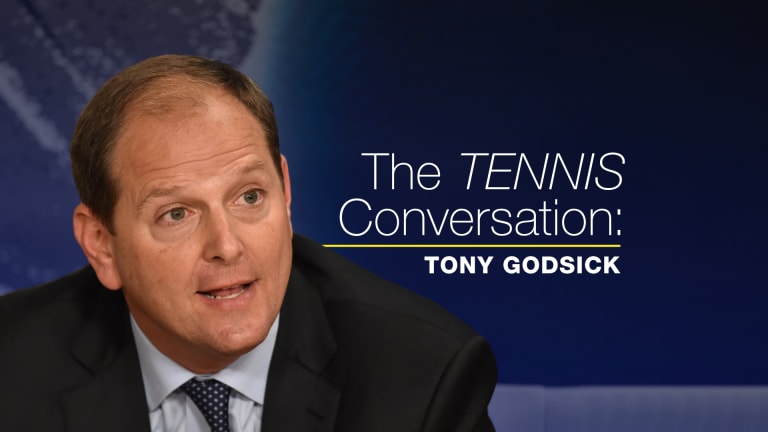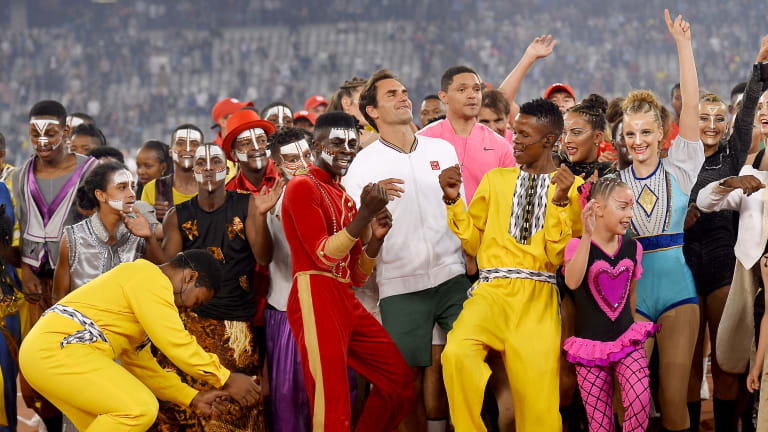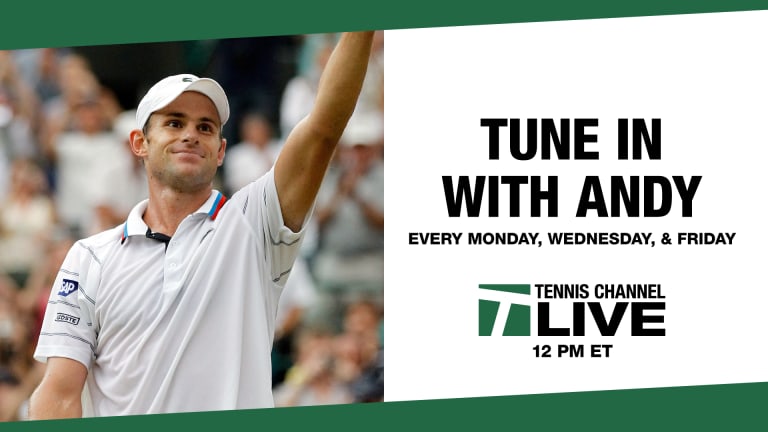In addition to Federer, Godsick represents Juan Martin del Potro, Alexander Zverev and Coco Gauff. (Getty Images)
Roger always wanted to play a match in South Africa, his mom’s home country, while he was still playing professionally. We had held Match for Africas in Zurich, Madrid, Seattle and San Jose, but it made the most sense to do one in the country that Roger’s foundation supports most of all.
We got talking seriously about it over the last eight years. We started asking ourselves the necessary questions: When could we do this? When is the right time? What would it look like? The tennis schedule is so difficult to navigate.
From the onset, we always knew who Roger wanted to play against, whenever the event actually happened: Rafa. If I’m going to play in my mom’s country for the first time, Roger told me, it has to be against my biggest rival.
About two years ago is when it really started to come to fruition. We looked at our schedule and Rafa’s, and where the match could work out. I’d say a year ago we got the word that February, after the Australian Open, would be the time.
But there was more to it than that. One of the reasons Roger still plays tennis today is the rush and excitement of competing in front of some of the biggest crowds on the biggest stages around the world. South Africa doesn’t have that much infrastructure in terms of indoor facilities, so I threw out the idea of playing outdoors—and going after a world record. We had to check the weather forecast, because if there was a pattern of rain in February in Cape Town, then outside was a no-go.
From there, the event turned into a life of its own. Bigger was better, and we were aiming for over 50,000 fans. But we needed to create a tennis experience inside a stadium that was built for the FIFA World Cup. How do you get the sightlines right? Do you raise the court so people can see it? What about VIP seats? Now those questions became necessary.
!
On February 7, with 51,954 in attendance, Federer and Nadal squared off inside South Africa’s Cape Town Stadium. The Swiss won the match, but the result was secondary to the setting, and the financial support the two superstars helped raise. (Getty Images)
Carlos Costa —Rafa’s agent—and I worked together at IMG for years. I’ve known Rafa since he started out on tour, but because of the rivalry, we’ve all become close. And the relationship between Roger and Rafa has evolved to the extent where those two are really, really close. They’re fierce competitors on the court, and they always will be. But the minute the match is over—and even during the match—they have so much respect for each other. They’re always there for one another.
Roger is huge in South Africa because he has the passport. But with Nadal, we weren’t bringing in a second act. We were bringing in a global icon, someone who was just as big as Roger. The same goes for Trevor Noah, who, like Roger, is half-South African, half-Swiss. He was amazing. Not to mention Bill Gates.
Rafa flew in from Kuwait, and he played a great match. We had a nice private dinner the night before, and Rafa understood how much this meant to Roger. He understood that it was more than just a two-day fundraiser for Roger’s foundation—it was also a way to inspire a continent that is completely underserved from a tennis standpoint, and to inspire a new generation of players.
He was excited, but he was really nervous. He knew he was the host, and everything that came along with that. He knew how much South Africa had followed him over the years. He had never played there, so there was a new kind of pressure. People bought tickets not to see a funny match, but to see Federer tennis. He said to me, “I can’t do that all of the time. I feel pressure to play the style of tennis people expect.” He wanted to play a great match. He also knew how much it meant to his family, especially his mom. We wanted to make sure everything was perfect that day, because it truly was a once-in-a-career opportunity. I think he was genuinely overwhelmed by everything.


